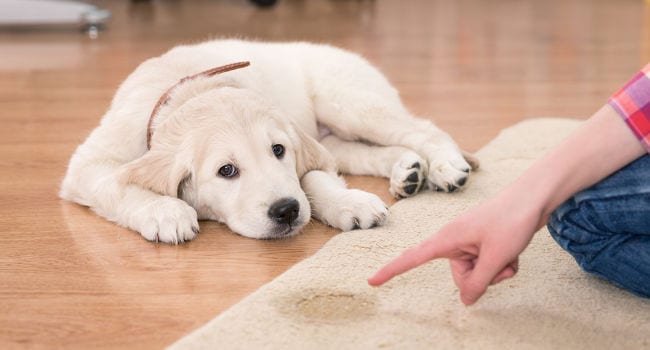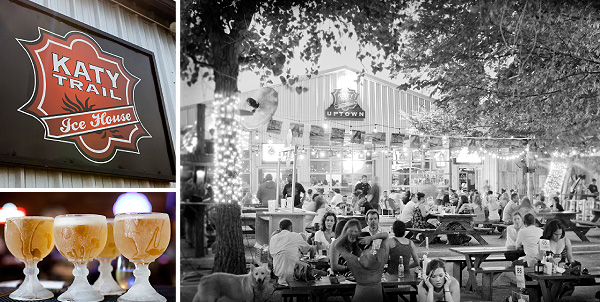Table Of Content

Sometimes, there’s a physical cause for a dog peeing in the house, with a urinary tract infection being just one possibility. A medical problem may make them need to go pee more frequently or with increased urgency, which may be why they can’t hold it as long as usual, and why there’s no problem if you’re there to let him out. It’s worth keeping track of how often Toby asks to go out when you’re home to see if he is going more frequently than normal. It’s important to provide your dog with an adequate amount of water to stay hydrated and healthy. Restricting your dog’s water intake can lead to dehydration and other health issues. Instead, monitor your dog’s water consumption and bathroom breaks to prevent accidents inside the house.
Ending Indoor Peeing: A Comprehensive Guide to Training and Solutions

A well-exercised dog is less likely to pee in the house and after a long walk will settle down happily instead of fretting. Whatever you do, don't give up on your dog or give your dog away—you can work through this. In the meantime, be patient with your canine companion and try taking one or more simple steps to help the dog with its problem. By providing your mobile number, you agree to receive autodialed, recurring text messages from the HSUS with updates and ways you can help animals. It will take time for your dog to gain confidence, but with time, they can overcome their fears and blossom into a happier, more confident dog. Kristen Levine is a nationally acclaimed pet expert, influencer, and Fear Free Certified® Professional with over 30 years of experience working with pets.
Dog Training: How to Crate Train a Puppyopens in a new tab

Whether you have a new puppy who is still learning or an older dog who is having accidents, it’s important to address this behavior quickly to prevent it from becoming a habit. – Consulting with a professional trainer or behaviorist can be beneficial if you’re struggling to potty train your dog or address unwanted behaviors. They can provide personalized guidance, training techniques, and support to help you and your furry friend succeed. – Pee pads and artificial grass patches can be useful for indoor potty training, especially for pet owners who live in apartments or have limited outdoor space. It’s important to choose a designated bathroom area and consistently reinforce the desired behavior to help your dog learn where it’s appropriate to relieve themselves. New and strange smells will encourage urine marking behaviours or male dogs to mark their territory and can result in him cocking his leg on every piece of furniture in your home.
What to Do If Your House-Trained Dog Starts Peeing Indoors - SheKnows
What to Do If Your House-Trained Dog Starts Peeing Indoors.
Posted: Fri, 23 Aug 2019 18:13:37 GMT [source]
Behavioral
If your dog only pees inside when you’re not home, it could be due to separation anxiety or lack of housetraining. Providing your dog with mental stimulation, exercise, and a consistent routine can help address the issue. Moving to a new apartment or house can cause setbacks in housetraining, especially in younger adult dogs. Introducing a new puppy to your family may also cause your adult dog to revert back to inappropriate habits, like urinating in the house.
The idea is to make those rooms their home, and that won’t work as well if you’re not there, too. Neither submissive nor excitement-related urination is done “deliberately”. Treatment involves addressing the emotion related to the social interaction. As discussed above, it is important that you do not punish your dog if you come home to urine or feces on the floor. Just clean quietly and, once the reason for the behavior is determined, you can begin appropriate treatment. If you don’t want to waste the fruit, use the peel from the fruit as a deterrent.
Use an enzymatic cleaner to thoroughly clean the area and deter your dog from re-marking the spot. Providing ample opportunities for outdoor bathroom breaks can also help redirect your dog to appropriate bathroom spots. Before you can effectively address your dog’s peeing inside the house, it’s important to understand the underlying cause. Is it a behavioral issue, a medical problem, or simply a lack of housetraining? By identifying the root cause, you can tailor your approach to effectively stop the behavior.
As we mentioned before, removing old urine odors is important for stopping your dog from peeing in the house. Likewise, if your dog keeps peeing in the same spot, you need to do the same thing and clean the stained area thoroughly. For tips and tricks on removing old urine stains, check out our other blog post here. The best way to stop a puppy from peeing in the house is to potty train it. But in order to do that, you need to be well-equipped and prepared for the job.
Three Reasons Your Dog Keeps Peeing in the Same Spot
By using a crate properly, you can help your dog learn to hold their bladder and only go to the bathroom outside. Training or retraining your dog is a vital aspect of stopping indoor peeing. Whether dealing with a new puppy or an adult dog, consistent schedules, positive reinforcement, and clear communication are key. Spaying or neutering your dog can significantly reduce urine marking behaviors, especially in intact dogs. This procedure often leads to decreased hormonal-driven actions, including indoor peeing.
When it Comes to Dog Crates, Think Outside the Literal Box
It’s important to establish a routine, set clear expectations, and be patient as your dog learns new behaviors. With time and effort, you can effectively train your dog to go potty outside and prevent accidents indoors. It’s important to consider the possibility of underlying medical issues when dealing with a dog who is peeing in the house. Conditions such as urinary tract infections, bladder stones, or diabetes can cause increased urination and accidents indoors. Every dog is unique, and what works for one dog may not work for another.
To stop your dog from peeing in the house, you’ll want to try to determine the cause of the behavior and then work towards a solution. There are also steps you can take in the meantime to stop or minimize the conduct and, if necessary, deal with the situation if the inappropriate urinating can’t be stopped. By delving into the reasons behind indoor peeing, we can approach the issue with empathy and knowledge, crafting solutions that respect our pets' needs and living spaces. Like humans, our four-legged family members have reasons for their actions, and indoor peeing is no exception. Understanding the underlying causes of this behavior is the first step towards a harmonious home with your pet. If your dog is drinking a lot or peeing a lot it may be as simple as taking them out for more toilet breaks.
The rise of smart pet products, such as indoor potty systems and pet cameras with built-in training features, has provided dog owners with innovative tools to help prevent accidents in the house. As pet owners become more conscious of their dog’s health and well-being, there is a growing emphasis on the role of diet, exercise, and overall wellness in preventing behavioral issues. A healthy and balanced lifestyle can contribute to a dog’s overall happiness and reduce the likelihood of urination problems.
And while this is a natural and common occurrence with dogs, it’s still not pleasant to deal with. If your dog is having accidents when you’re not home, consider using a crate or confining them to a designated area with access to an indoor potty solution. Providing plenty of opportunities for your dog to go outside before leaving can also help to reduce accidents while you’re away.
This method can take a bit longer than going straight outside but with patience, your puppy should soon learn that peeing in the house isn’t acceptable. It is impossible to house-train any dog if you are not there, even if you only work part-time you need to take time off to do the job properly and consistently. It won’t take long, but it is vital to prevent your pet from peeing in the house. I love the one by Cooper and Gracie I use their shampoos too and they only use natural ingredients. A dog’s environment has to be comfortable and secure for them during the alone time or through the night can reduce accidents. Once your vet has ruled out all health issues, it is likely that you and your dog are facing a behavioral problem.
Keep the games for afterwards when they will not only enjoy the playtime but also see it as a reward. Do not put your dog outside to go potty and leave them there, expecting them to do the business. This accident can be avoided by teaching your dog to sit and ignoring them until they become calm and relaxed when you enter a room and encouraging any visitors to do the same. Once they do pee where you want, you can try positive reinforcement.
Don’t play with or lavish attention on your dog until they have been to the toilet. Most dogs need to go to the toilet when they wake up, about half an hour after eating, and they can get into a routine of going shortly before they go to sleep. And once your dog has this schedule, it means you can coincide these times with walks or with letting them in the garden to do their business. Your dog will learn everything from the time you get up to the time your son or daughter gets home from school.

No comments:
Post a Comment